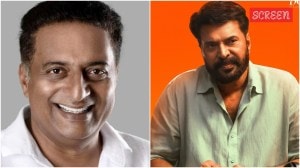UP looks to pvt firms for water supply
After handing over the distribution of electricity in two cities to private hands,the Government of Uttar Pradesh is set to try...
After handing over the distribution of electricity in two cities to private hands,the Government of Uttar Pradesh is set to try out the model with the urban water supply as well. Initially,this will be done in one zone each of both Lucknow and Allahabad. The bids are to be invited soon.
The idea is to ensure 24×7 supply of water and to check its wastage, said a Government official. Once successful,the project would gradually be implemented in other places,he added. The authorities have already identified Mumfordganj zone in Allahabad for this venture,although in Lucknow,they are yet to identify the most critical area.
The Government started toying with the idea under the Jawahar Lal Nehru National Urban Renewal Mission (JNNURM) after being asked by the Centre to use innovative projects for bringing improvement in the water supply.
At present,water requirement in the urban areas is 6,500 million litres a day (MLD),while the current supply through a pipeline is only 4,575 MLD. The gap is met to some extent through hand pumps. There are about one lakh hand pumps in urban areas.
The officials in the UP Jal Nigam claim that there is no shortage of water but there are shortcomings in its management of the same. Over 40 per cent water gets wasted either by the users or during the supply,said an official.
The problem in rural areas is different. Here,the requirement of water 14,000 MLD and the supply is mostly through hand pumps. As per the records of UP Jal Nigam,out of 2.60 lakh rural habitations in Uttar Pradesh,only 30,000 are getting water through pipeline supply.
The Government aims to ensure hundred per cent safe drinking water supply through pipelines in both urban and rural areas. It hopes this trial of water supply through public private partnership (PPP) model will provide an answer.
These key issues are also being incorporated in the first-ever state policy on drinking water,a rough draft of which is already prepared. A water policy was formulated in 2002,but that focused only on irrigation which comprises 97 per cent of water usage.
Since the funding for drinking water is mostly by the Centre,which has drawn guidelines for the same,work in the field of drinking water was being carried out so far under those guidelines, explained a senior officer. This is the first time a separate policy is under way for drinking water and sewerage.



- 01
- 02
- 03
- 04
- 05




























